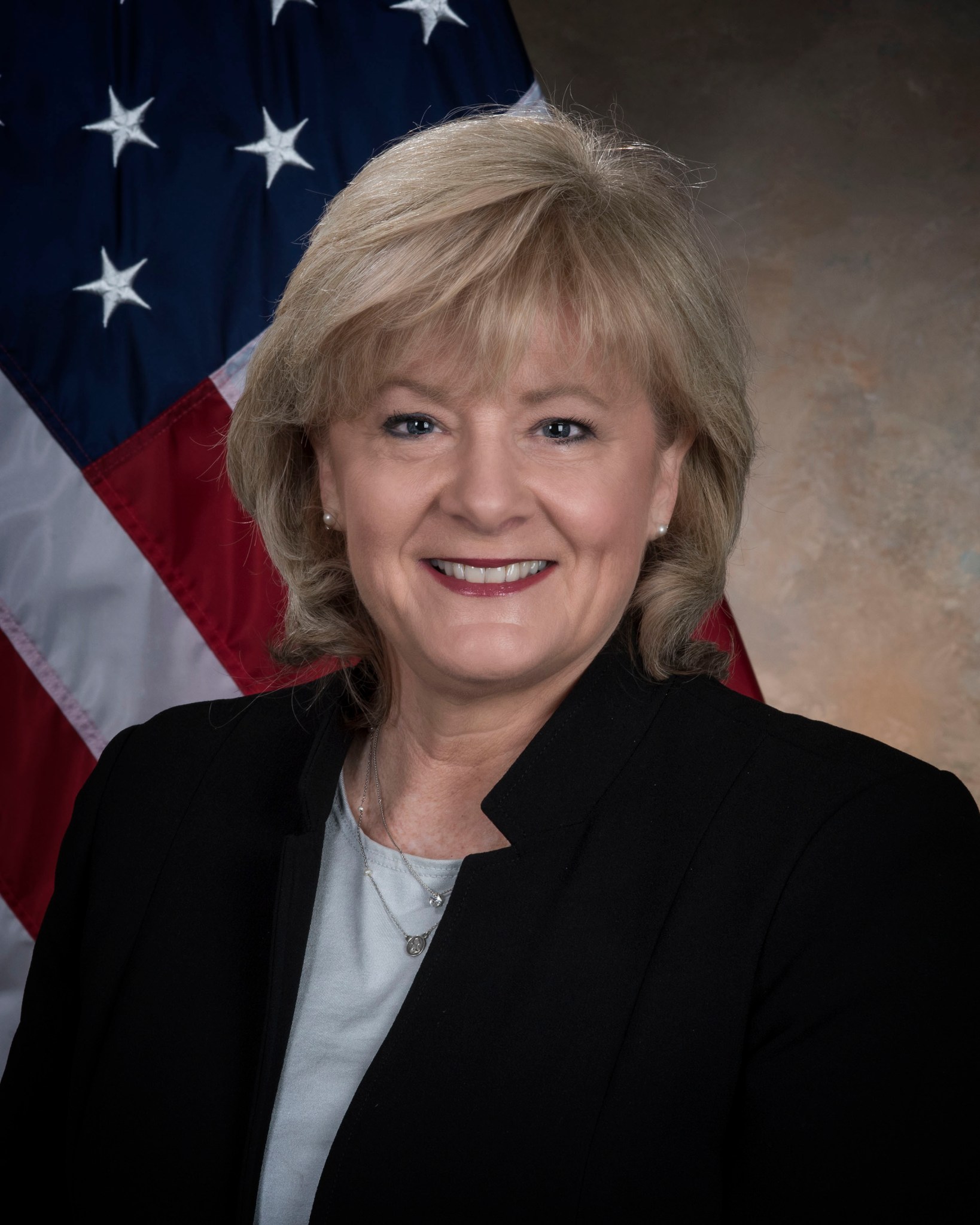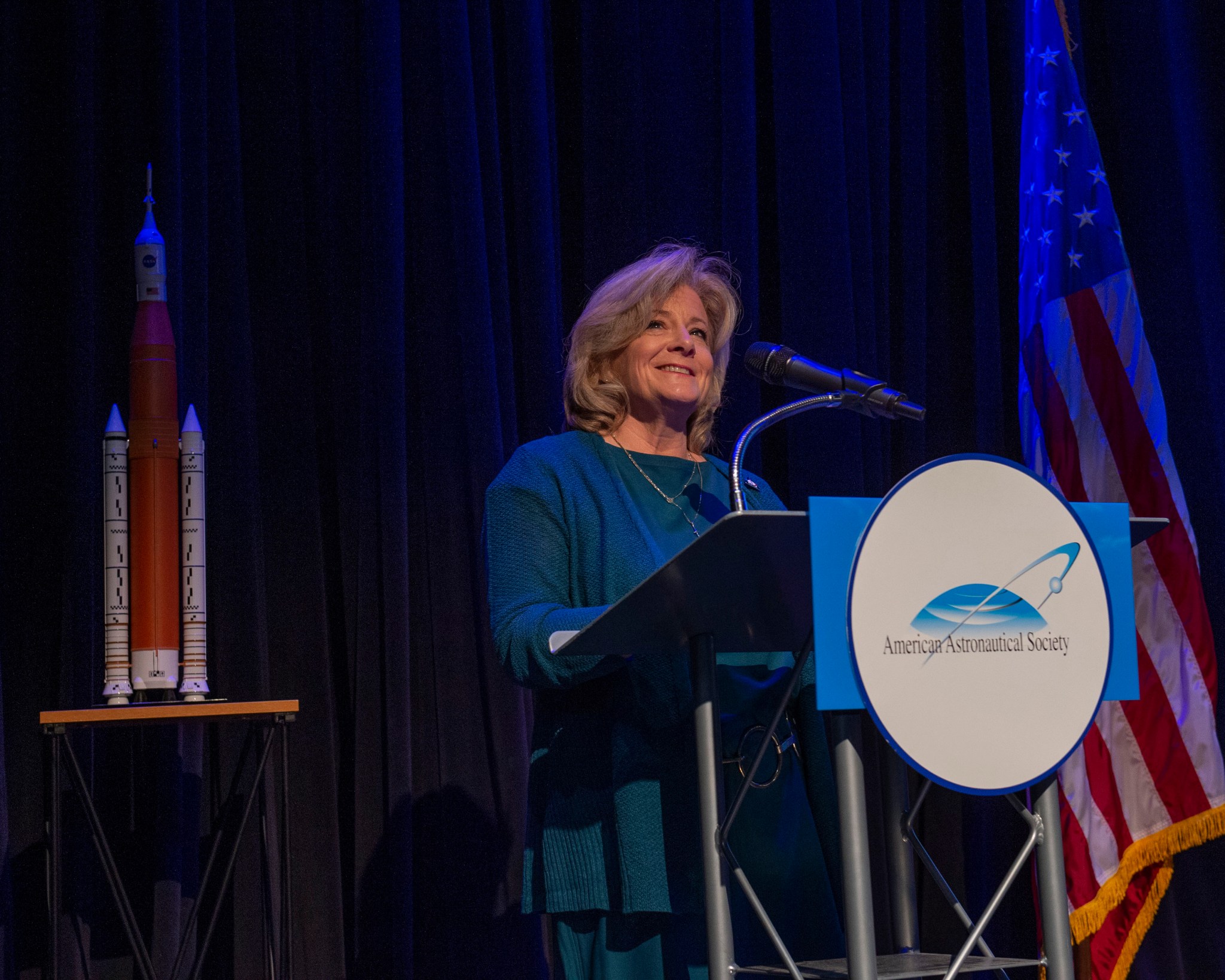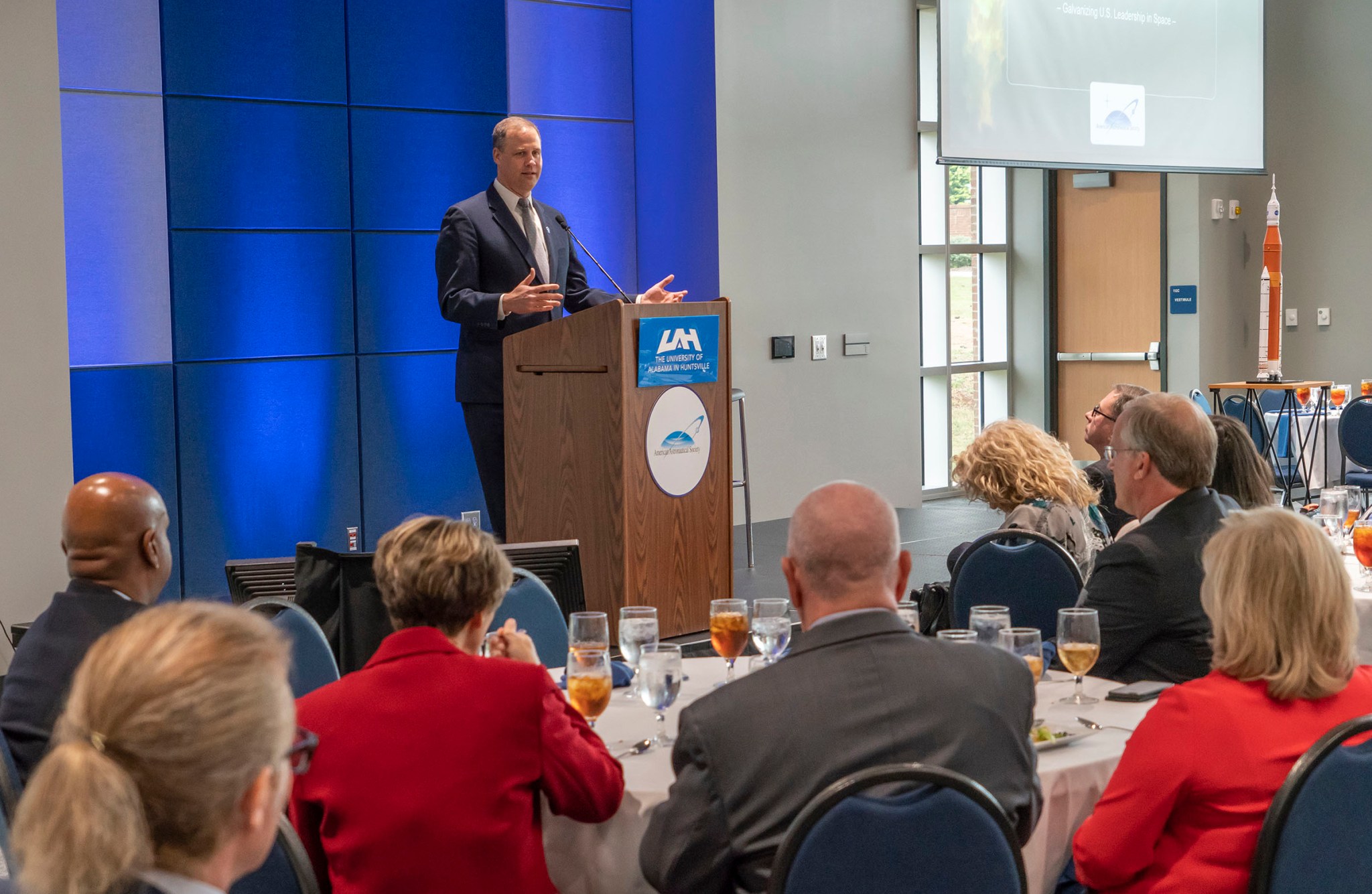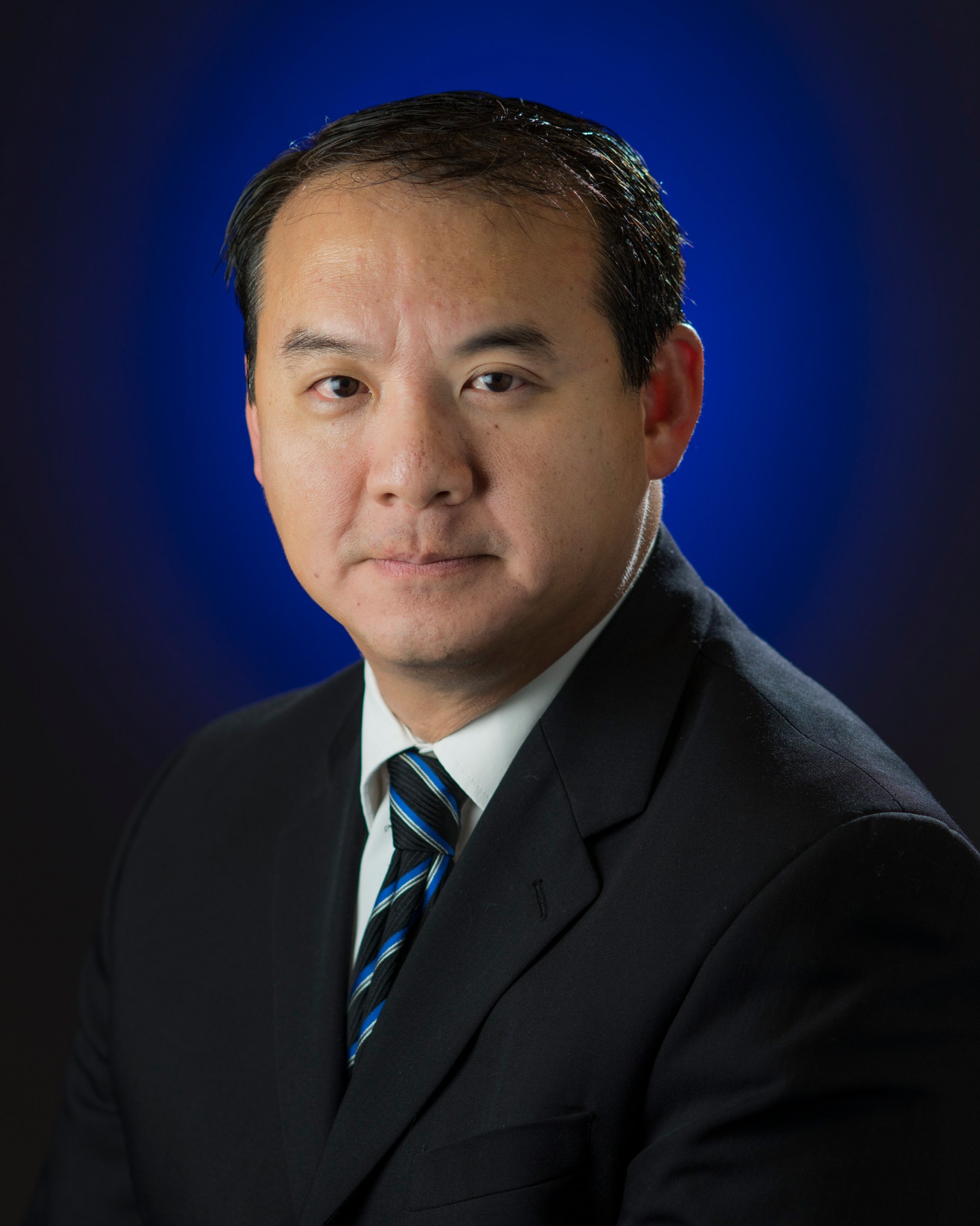In This Week’s Star
- Director’s Corner: 14 Million Hours and Counting
- Annual Wernher von Braun Symposium Brings Together NASA and Industry Space Policy Leaders
- NASA’s Fermi Mission Energizes the Sky With Gamma-ray Constellations
- Marshall Mentoring Event Set for Nov. 6; Team Members Invited
- Payload Operations Integration Center Goes Pink
- This Week in NASA History: Saturn V First Stage LOX Tank at Marshall – Nov. 4, 1964
Director’s Corner: 14 Million Hours and Counting
Marshall Space Flight Center has worked 470 days without a lost-time injury – that’s 14 million work hours and counting.
This is no small feat given the nature of our work – from the welding of the world’s largest core stage to the safely run tests on key components to everyday office work that’s necessary to delivering on our mission. It’s a feat our 6,000-plus workforce should be proud of.
In honor of Safety Day, I’ve called for a six-hour stand down to take time out of our day to recognize the team for working safely, but also to remind everyone of the importance of safety – every task, every day.
People are our most important asset, and everyone should return home the same way they arrived, which requires a renewed focus on our personal safety and the safety of the team. To deliver on our mission, we must continuously strive to become an incident and injury free workplace.
We strive to have an environment where safety is a priority and employees feel comfortable communicating safety issues without fear of retribution. You should have received a message with a survey from the NASA Safety Culture Working Group. Your feedback helps us assess our safety culture. I would appreciate hearing from you – the data from this survey helps the leadership team make decisions on our safety focus areas.
Thank you for what you do each and every day – and for doing it safely.
Annual Wernher von Braun Symposium Brings Together NASA and Industry Space Policy Leaders
By Jonathan Deal
Leaders and managers from NASA’s Marshall Space Flight Center gathered with the aerospace community Oct. 23-25 for the 11th annual Wernher von Braun Symposium at the University of Alabama in Huntsville.
The symposium featured speakers and panelists from government, industry and academia who focused on the theme, “Galvanizing U.S. Leadership in Space.” Panel discussions included exploration technologies, International Space Station commercialization, lunar surface operations, lunar gateway planning, commercial space initiatives and future payloads on NASA’s Space Launch System (SLS).
“It’s about working side by side for the benefit of all humanity,” said Marshall Center Director Jody Singer, who was the guest speaker at the event luncheon on Oct. 24. “We want to make a difference in human deep space exploration. We can make the impossible possible, but it can’t be done alone. We must work together as citizens of Earth to push our presence deeper into space than ever before.”
NASA Administrator Jim Bridenstine, the luncheon guest speaker on Oct. 26, emphasized the importance of communicating NASA’s message across the globe.
“If I’m able to do one thing, it would be to really communicate to the world how important space is to their lives and how NASA is involved in blazing that trail that has improved the human condition on Earth,” said Bridenstine.
Bridenstine also showed his support of SLS and NASA’s Orion spacecraft that will lead the next steps of human exploration to the Moon and ultimately to Mars, extending human exploration farther into space than ever before.
“What SLS is going to give us is more up mass than we’ve ever had in human history. We’re going to take more capabilities deeper into space than ever before. That’s what SLS represents. SLS and Orion are critical pieces of the lunar architecture.”
The symposium was hosted by the American Astronautical Society and organized in conjunction with the University of Alabama in Huntsville and the Marshall Center.
Deal, an ASRC Federal/Analytical Services employee and Marshall Star Editor, supports Marshall’s Office of Strategic Analysis & Communications.
NASA’s Fermi Mission Energizes the Sky With Gamma-ray Constellations

Scientists with NASA’s Fermi Gamma-ray Space Telescope devised a set of 21 new constellations, constructed from sources in the gamma-ray sky to highlight the mission’s tenth year of operations. The high-energy constellations include characters from modern myths, like Godzilla, the Little Prince and the antimatter-powered U.S.S. Enterprise from “Star Trek: The Original Series.” Others represent scientific concepts and tools, from the Saturn V rocket to Schrödinger’s Cat — both alive and dead. A web-based interactive, developed by NASA Marshall Space Flight Center astrophysicist Daniel Kocevski, showcases the constellations on an image of the whole gamma-ray sky mapped by Fermi. (NASA)
Marshall Mentoring Event Set for Nov. 6; Team Members Invited
On Nov. 6, NASA’s Marshall Space Flight Center will welcome Steve Shih, NASA associate administrator for Diversity & Equal Opportunity, to lead a mentoring event for team members.
The session will be from 8 a.m. to noon at Morris Auditorium in Building 4200,. All Marshall civil servant employees and contractors are invited to participate.
Joining Shih for a group mentoring panel discussion will be Johnny Stephenson, director of Marshall’s Office of Strategic Analysis & Communications; Lakiesha Hawkins, chief of Marshall’s Avionics Systems Integration Branch; Melvin McKinstry, master planner in the Planning & Facilities Utilization Office; Melissa Van Dyke, deputy manager of the Chief Engineer’s Office in Marshall’s Flight Partnership & Programs Office; and Toan Vu, assistant manager of the Engineering Directorate’s Chief Engineer’s Office. Marshall Associate Director Steve Miley will emcee.
For further information, contact Renea Scoble, Marshall human resources specialist.
Payload Operations Integration Center Goes Pink
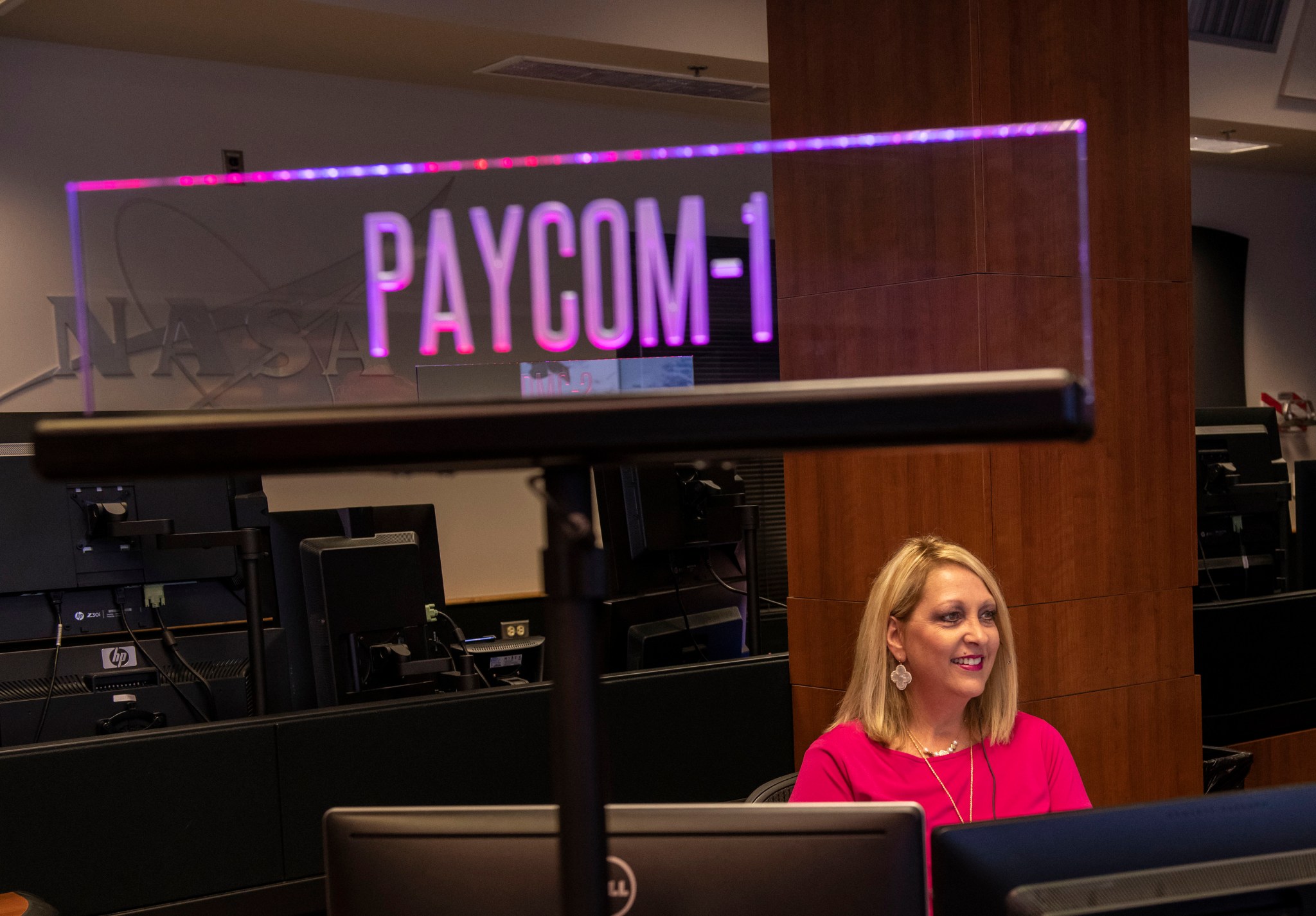
In honor of those affected by breast cancer, NASA’s Marshall Space Flight Center turned the Payload Operations Integration Center control room pink last week. Here, Payloads Communication Manager Lori Meggs sits behind a pink “PAYCOM-1” sign inside the POIC. PAYCOM staff coordinate payload-related voice communications between the Payload Operations Center and the International Space Station crew. The Payloads Operations Integration Center manages science experiments on the station 24/7, 365 days a year. As NASA’s primary space station science command post, the payload operations team coordinates all U.S., European, Japanese, and Canadian scientific and commercial experiments on the station, synchronizes payload activities of international partners, and directs communications between station crewmembers and researchers around the world with onboard experiments. (NASA/Fred Deaton)
This Week in NASA History: Saturn V First Stage LOX Tank at Marshall – Nov. 4, 1964
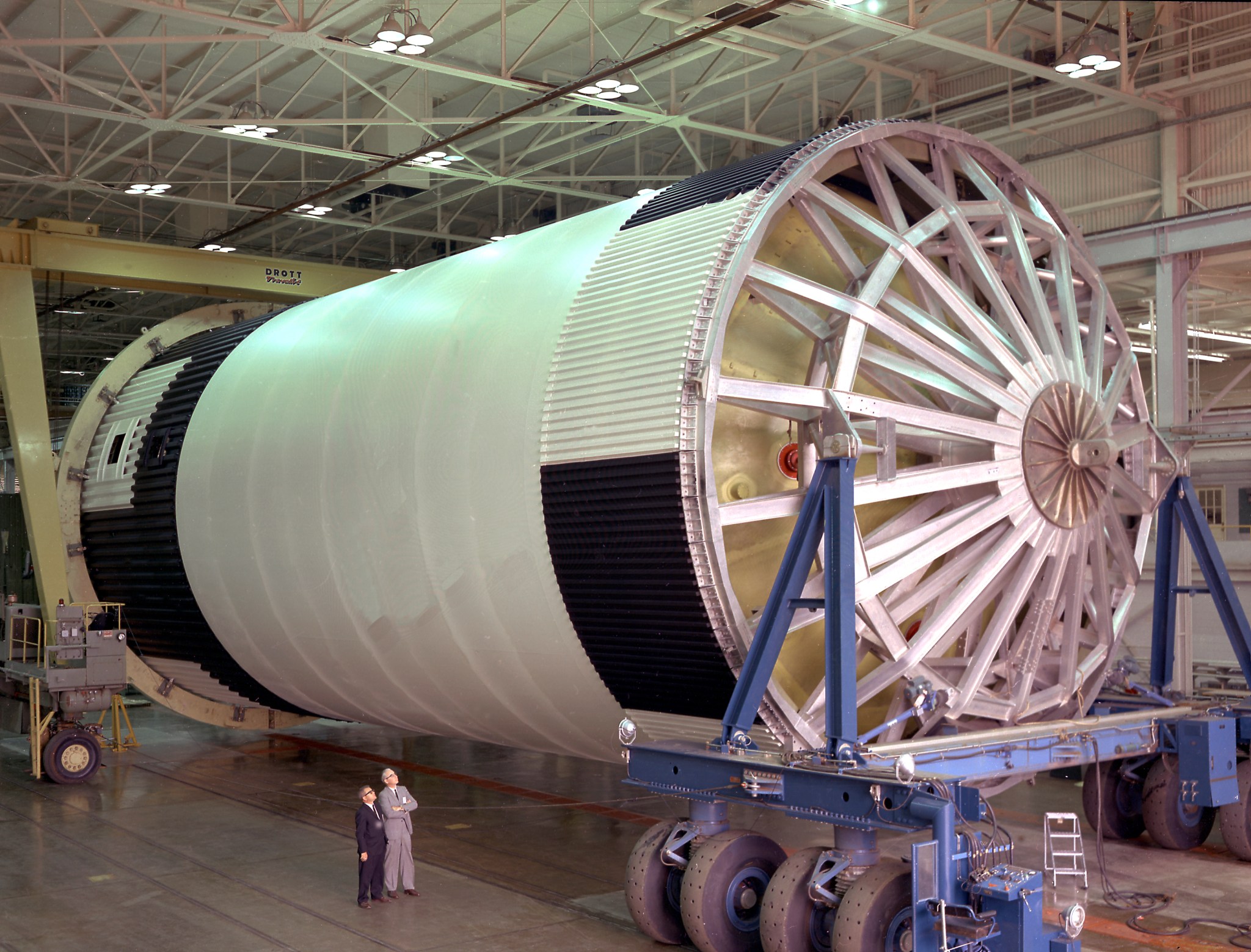
This week in 1964, an assembled liquid oxygen tank for the Saturn V S-IC, or first stage, is photographed at NASA’s Marshall Space Flight Center. Here, the LOX tank can be seen with an “A” frame and transporter as it awaits mating to the stage’s fuel tank. When completely assembled, the Saturn V S-IC stage was 138 feet tall, 33 feet in diameter and capable of delivering 7.5 million pounds of thrust from its five F-1 engines. Today, Marshall is developing NASA’s Space Launch System, the most powerful rocket ever built, capable of sending astronauts to the Moon, Mars and deeper into space than ever before. The NASA History Program is responsible for generating, disseminating, and preserving NASA’s remarkable history and providing a comprehensive understanding of the institutional, cultural, social, political, economic, technological and scientific aspects of NASA’s activities in aeronautics and space. For more pictures like this one and to connect to NASA’s history, visit the Marshall History Program’s webpage. (NASA)



























